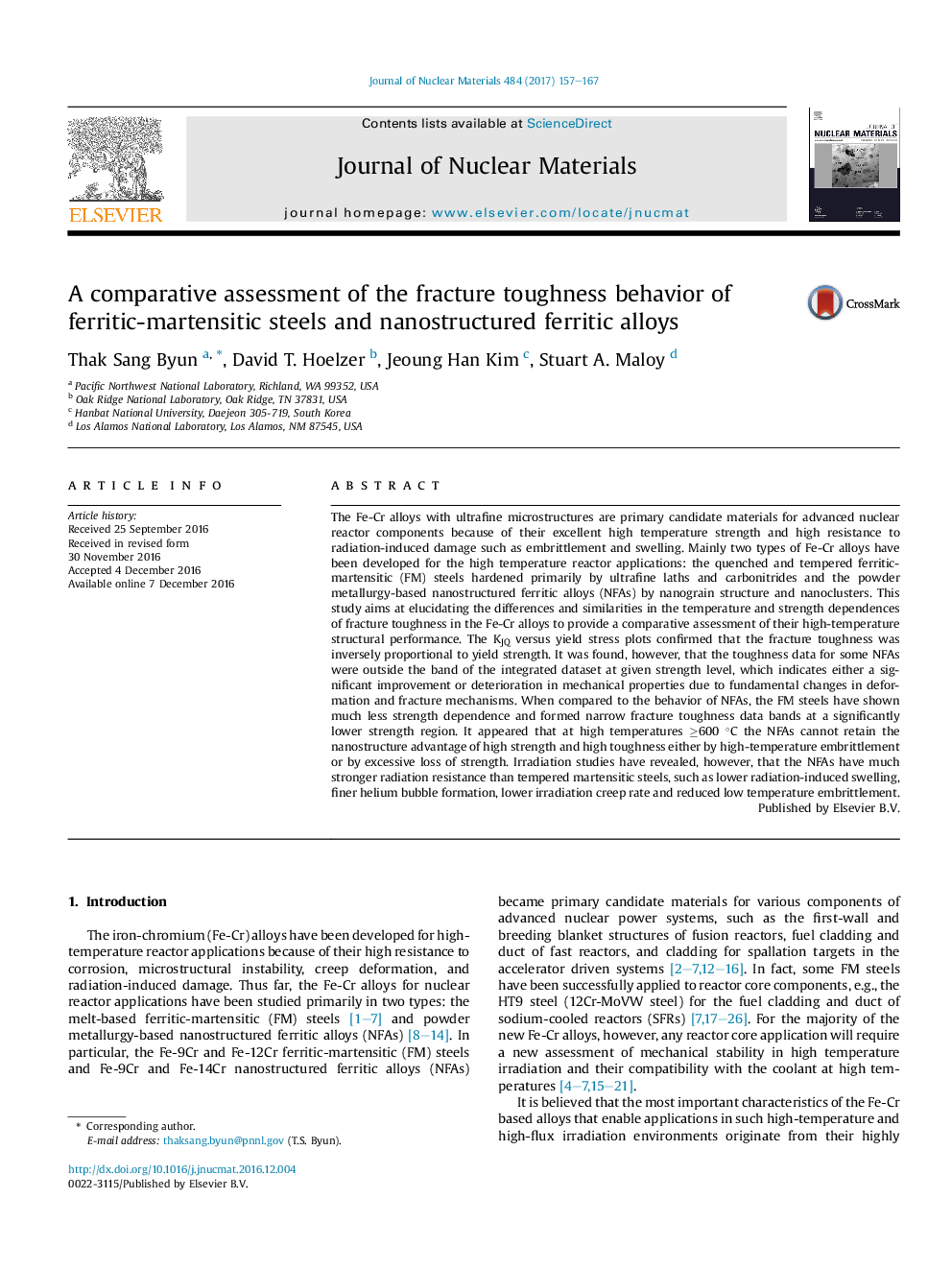| کد مقاله | کد نشریه | سال انتشار | مقاله انگلیسی | نسخه تمام متن |
|---|---|---|---|---|
| 5454414 | 1514162 | 2017 | 11 صفحه PDF | دانلود رایگان |
عنوان انگلیسی مقاله ISI
A comparative assessment of the fracture toughness behavior of ferritic-martensitic steels and nanostructured ferritic alloys
ترجمه فارسی عنوان
ارزیابی مقایسه ای از رفتار چقرمگی شکست فولادهای فرتی مارتنزیت و آلیاژهای فریتی نانوساختار
دانلود مقاله + سفارش ترجمه
دانلود مقاله ISI انگلیسی
رایگان برای ایرانیان
موضوعات مرتبط
مهندسی و علوم پایه
مهندسی انرژی
انرژی هسته ای و مهندسی
چکیده انگلیسی
The Fe-Cr alloys with ultrafine microstructures are primary candidate materials for advanced nuclear reactor components because of their excellent high temperature strength and high resistance to radiation-induced damage such as embrittlement and swelling. Mainly two types of Fe-Cr alloys have been developed for the high temperature reactor applications: the quenched and tempered ferritic-martensitic (FM) steels hardened primarily by ultrafine laths and carbonitrides and the powder metallurgy-based nanostructured ferritic alloys (NFAs) by nanograin structure and nanoclusters. This study aims at elucidating the differences and similarities in the temperature and strength dependences of fracture toughness in the Fe-Cr alloys to provide a comparative assessment of their high-temperature structural performance. The KJQ versus yield stress plots confirmed that the fracture toughness was inversely proportional to yield strength. It was found, however, that the toughness data for some NFAs were outside the band of the integrated dataset at given strength level, which indicates either a significant improvement or deterioration in mechanical properties due to fundamental changes in deformation and fracture mechanisms. When compared to the behavior of NFAs, the FM steels have shown much less strength dependence and formed narrow fracture toughness data bands at a significantly lower strength region. It appeared that at high temperatures â¥600 °C the NFAs cannot retain the nanostructure advantage of high strength and high toughness either by high-temperature embrittlement or by excessive loss of strength. Irradiation studies have revealed, however, that the NFAs have much stronger radiation resistance than tempered martensitic steels, such as lower radiation-induced swelling, finer helium bubble formation, lower irradiation creep rate and reduced low temperature embrittlement.
ناشر
Database: Elsevier - ScienceDirect (ساینس دایرکت)
Journal: Journal of Nuclear Materials - Volume 484, February 2017, Pages 157-167
Journal: Journal of Nuclear Materials - Volume 484, February 2017, Pages 157-167
نویسندگان
Thak Sang Byun, David T. Hoelzer, Jeoung Han Kim, Stuart A. Maloy,
